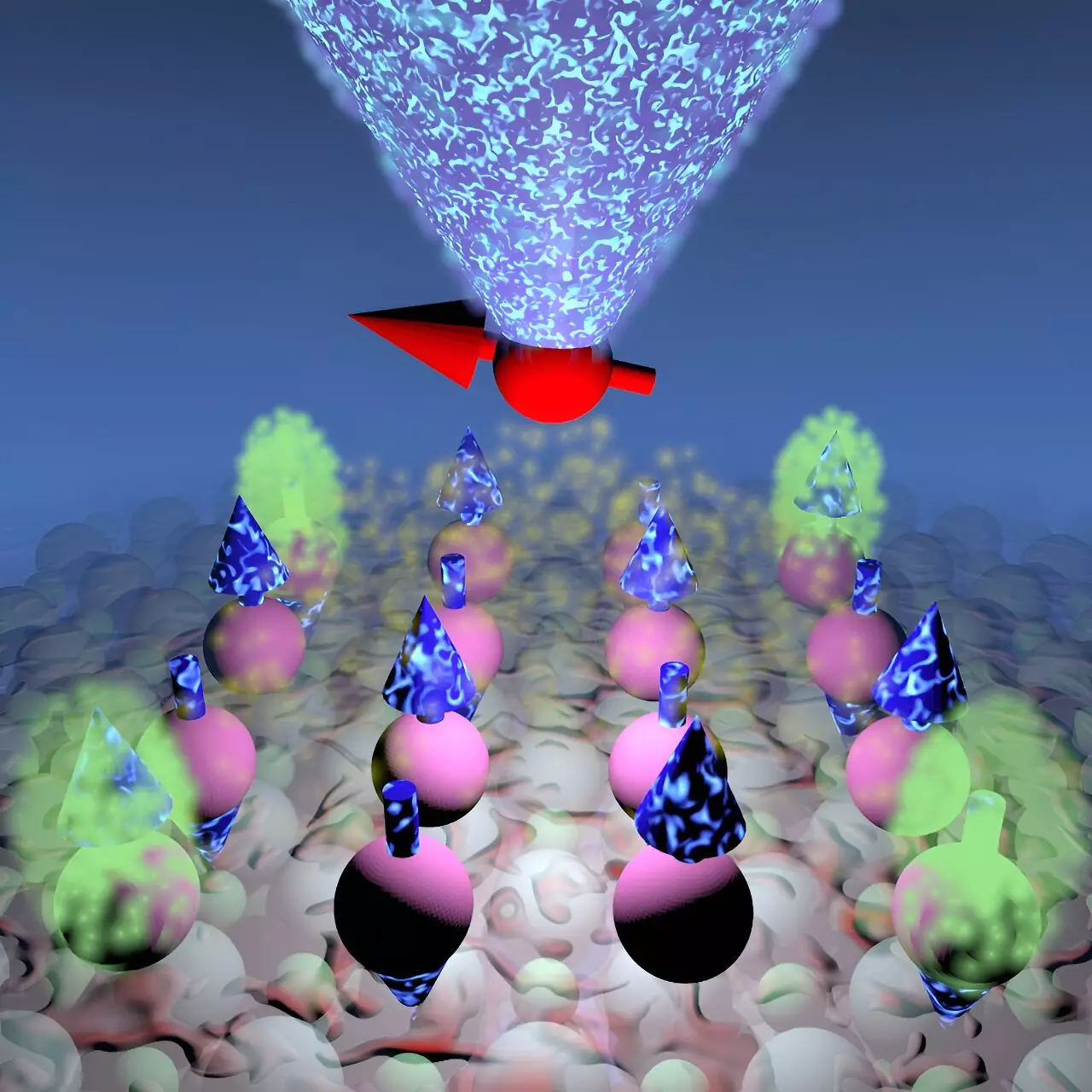The advancement of quantum technology hinges upon the ability to understand and manipulate the intricate behaviors of matter at the atomic level. When different quantum states interleave, a phenomenon emerges that can give rise to novel collective states of matter. These new phases possess unique properties and excitations that can materially expand our understanding of quantum mechanics. Recent collaborative research involving Aalto University and the Institute of Physics CAS has opened new avenues in this area by developing artificial quantum materials through precise atomic construction. This unique intersection of experimentation and theory has led to the synthesis of a groundbreaking quantum state known as a higher-order topological quantum magnet.
The methodology employed by researchers provides significant insight into the engineering of quantum materials. By stacking magnetic titanium on a magnesium oxide substrate and meticulously controlling atomic interactions, the team was able to sculpt a lattice of quantum states. Jose Lado, the pivotal theoretical architect behind this initiative, designed a framework conducive to the emergence of topological quantum magnetism. In the practical phase, the research, orchestrated by associate professor Kai Yang, leveraged advanced scanning tunneling microscopy for atomic manipulation, emphasizing the importance of precision when crafting these quantum entities.
This approach not only underpins the practical applications of quantum physics but also establishes a rich foundation for exploring the diverse behaviors intrinsic to higher-order topological states. The research elucidated how manipulating individual atoms could generate distinct quantum phenomena, including topological excitations that present markedly different characteristics compared to conventional magnetic systems.
The implications of achieving a higher-order topological quantum magnet are manifold. Beyond anecdotal curiosities in theoretical physics, this innovation promises to herald substantial advancements in quantum technology. Topological quantum magnets serve as platforms for realizing quantum superpositions, ultimately enabling phenomena that bridge the gap between microscopic experimentation and macroscopic applicability. The research reports that excitations within these materials exhibit properties that could be fundamentally different from those observed in traditional magnetic materials.
The study underscores that this particular class of quantum materials can exhibit a fascinating array of fractional excitations—states not typically reportable in standard electromagnetic phenomena. The perspective provided by Lado highlights how these excitations could pave the way for the realization of new physical phenomena, therefore affording researchers an opportunity to explore uncharted territories in quantum physics.
One of the most pressing barriers in the realm of quantum computing remains the persistence of decoherence—the loss of coherence in quantum information due to environmental interactions. The research indicates that the topological excitations produced in these higher-order quantum magnets display an impressive degree of robustness against perturbations. Such resilience may counteract the notorious impact of decoherence, thus fortifying the utility of these materials in tandem with quantum bits (qubits).
Furthermore, the experimental findings revealed a compelling enhancement in quantum coherence among topological excitations compared to their individual components, suggesting a pathway to stabilize information storage and transfer in quantum systems. The idea that engineered interactions among constituent atoms could yield stronger, protected quantum states signals a paradigm leap in the viability of quantum materials for practical applications.
As the field of quantum mechanics evolves, the work undertaken by the researchers signifies an essential step toward harnessing the abilities of quantum materials in technology. The development of higher-order topological quantum magnets holds the potential to redefine our understanding of collective quantum behavior and its applications, not just in theoretical domains but in the practical realm of quantum computing and information.
This research highlights the power of atomic manipulation and theoretical foresight in creating novel quantum states. The implications of these findings extend beyond scientific circles and may elicit profound transformations in future quantum technologies, presenting exciting possibilities for exploration and innovation in the years to come.


Leave a Reply